
|
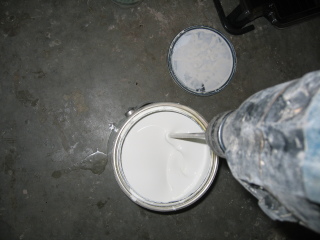 |
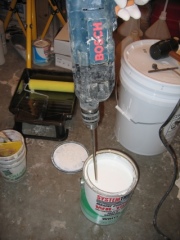 |
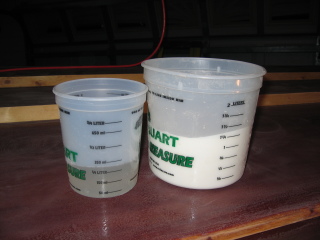 |
| My primer had been sitting for awhile and there was a good inch worth of filler that settled to the bottom. |
It took quite awhile to mix it up, even with a drill, but in the end it is perfectly mixed. |
The primer is a 2 part solution, a 4-to-1 ratio. In order to make manageable batches I mixed 1 liter of primer to 1/4 liter of activator. Once mixed, it is critical to thin the solution with water/alchohol. |
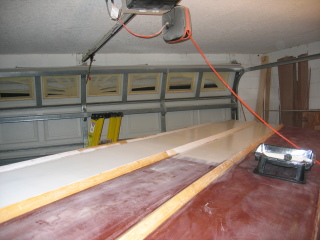 |
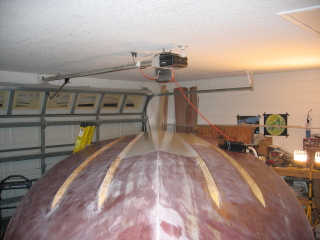 |
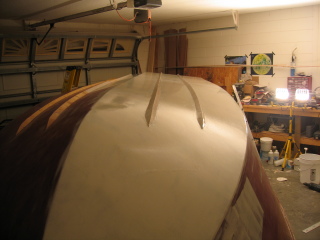 |
| I applied the primer with a roller, here's a shot from the beginning of the first coat. |
A view down the keel during the first coat. |
One side of the hull bottom is now primed with 1 coat. |
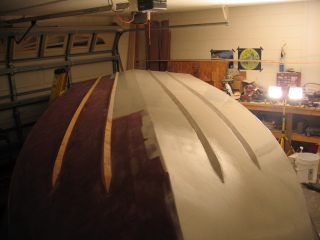 |
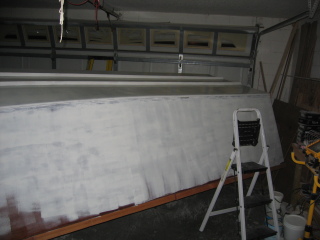 |
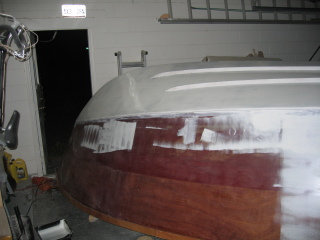 |
| Another view of the first coat on half of the hull bottom. |
I've now started to prime the sides. |
Priming near the bow. |
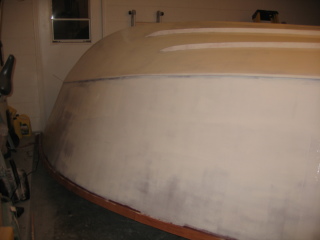 |
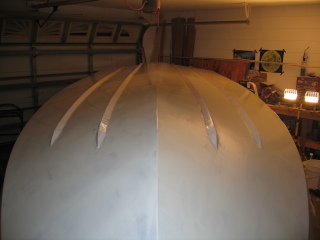 |
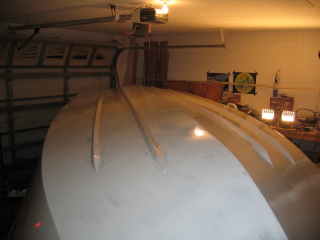 |
| The hull is now primed, first coat. For the record, I primed the entire hull with 4 coats! |
At this point the entire hull is primed with its first coat. |
A view of the hull bottom primed from the bow. |
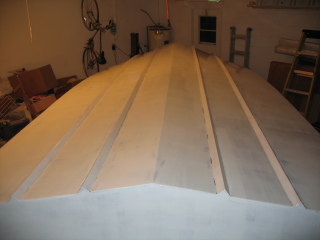 |
 |
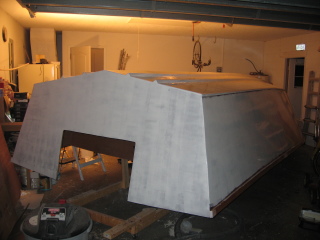 |
| A view of the stern looking forward after 1 primer coat. |
I stepped outside of the garage to try to take a picture of the whole boat in its primed state. |
Looking good, these are still the first coat, so the hull is not yet pure white. |
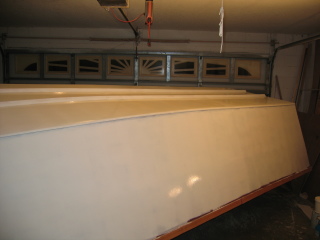 |
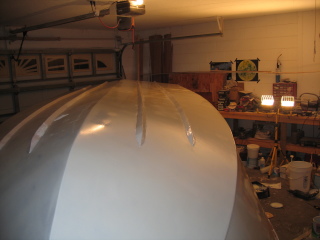 |
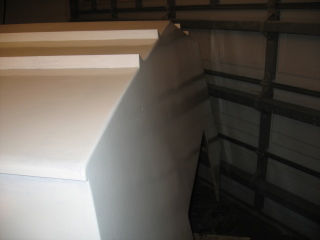 |
| This is a picture of the hull side with its 3rd coat of primer. |
A view of the boat with 3 coats of primer. |
A view of the transom. |
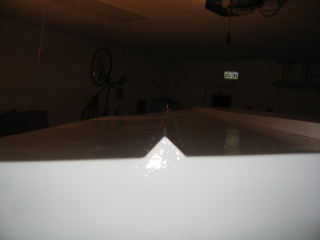 |
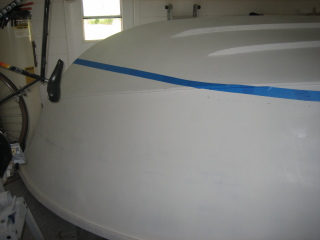 |
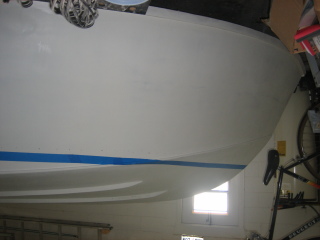 |
| An end of a strake at the transom, primer still wet. |
The hull was left to sit for over 7 days to allow the primer to cure. Pefect since I was on vacation that week. Once I returned the primer was sanded up to 220 grit. |
Now that the hull is ready for painting, I created a water-level and marked the DWL. I had a hard time trusting the line at the bow since it looks like it points upward, so I flipped this picture to prove it! |
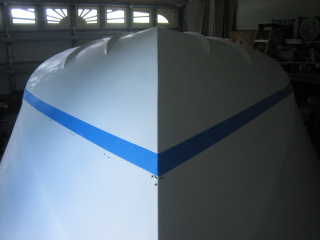 |
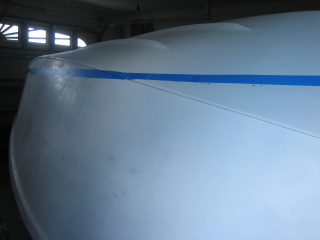 |
|
| Here's a view of the bow with the tape in place on both sides. |
This picture again shows that indeed the line is level despite the illusion from certain angles that it poing upwards once it crosses the chine. |
|

|